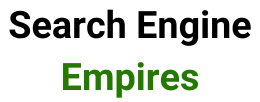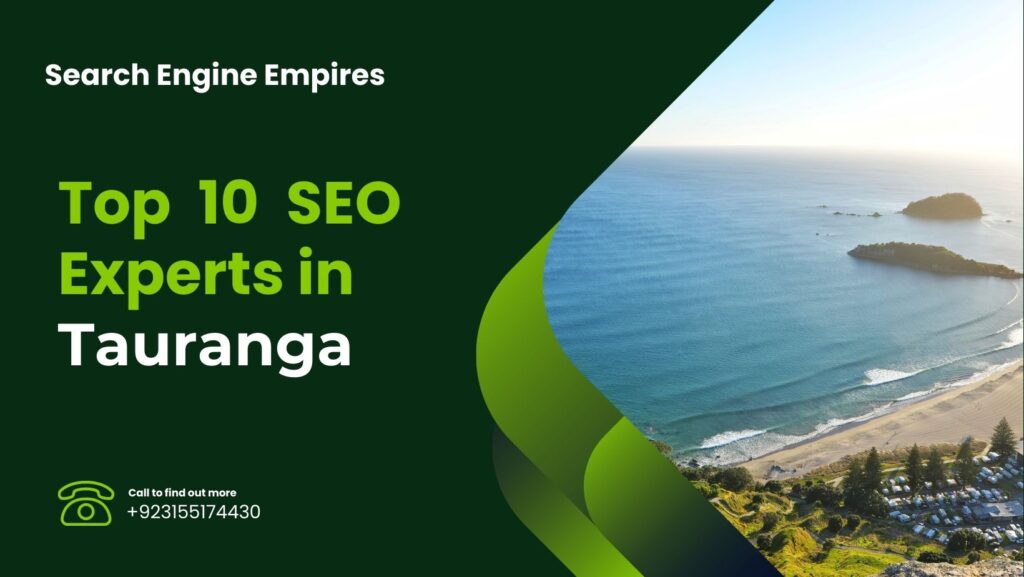Search engine algorithms are tricky – they’re constantly changing and evolving, making it hard to keep up with them. In fact, Google implements many of these changes and updates in a year. In 2022 alone, their search algorithms were updated 10 times.
From March 2022’s product reviews update to August 2022’s helpful content update and more, it’s clear that businesses have to deal with a lot of new changes.
So, what are these updates about? How do they impact your rank in Google Search? And should you care about them?
After reading this guide, you’ll know the answers to these questions and be better at search engine optimization (SEO).
How Does Google’s Search Algorithm Work?
Google is highly secretive about its search algorithms. And why not? That’s their competitive advantage. However, we do know the basics of how does Google’s search algorithm work.
For one, it comprises hundreds of factors that impact your website’s ranking in Google Search. Each of these factors is weighted differently and can have a range of influences on your search ranking.
While Google doesn’t divulge these factors, an SEO specialist and SEO content writing services typically look to optimize your content based on the three stages of Google Search:
• Crawling: Using their automated bots called “crawlers,” Google downloads your Internet content, such as text, images and videos.
• Indexing: After downloading your content, Google then analyzes and stores them in its enormous database called the Google Index.
• Serving: People will then see information from Google that it deems relevant to their query.
So, is increasing SEO traffic just a bunch of guesswork? Absolutely not.
Sure, Google doesn’t explicitly share their list of factors, but we can glean how it ranks content through its help documents, tools and announcements. Here are some SEO resources from Google:
• SEO Starter Guide: This is for anyone who wants to start with search engine algorithms. It provides best practices to make it easier for any search engine (not just Google) to “crawl, index and understand your content.”
• Google Search Essentials: Formerly known as Web Master Guidelines, this help document helps any web admin optimize their content for Google’s technical requirements, spam policies and key best practices.
• Google Search Console: This free tool gives insights into how Google views your website, metrics on your search performance and suggestions to attract more SEO traffic.
• Google Core Update List: For the curious, this list contains all the released core updates since 2020.
What’s A Broad Google Core Update?
There are three types of algorithm updates from Google:
| Major Fix Updates
You may be familiar with Panda, Penguin and Pigeon updates. These are just some of the named updates that “fixed” issues in Google’s search algorithms. For instance, the Panda update improved search quality by penalizing websites with tons of “copy content.” |
Minor Core Updates
These are smaller, unannounced updates that Google regularly releases. They’re unannounced since they often just tweak the search algorithms with minor changes. |
Broad Core Updates
These are updates that significantly impact search rankings. Since they’re expected to influence your search performance heavily, Google is announcing these updates at the start and completion of their rollout. |
|---|
So, a broad core update is a bigger update on search algorithms, but what does big mean?
Google likens a broad core update to a list of the top 100 movies:
“One way to think of how a core update operates is to imagine you made a list of the top 100 movies in 2021… The list will change, and films previously higher on the list that move down aren’t bad. There are simply more deserving films that are coming before them.”
So, it’s really just Google’s way of mixing things up and “refreshing” their search engine algorithms to help “under-rewarded” content rank in Google Search.
You can quickly identify a broad core update if it has the following characteristics:
• It is announced by the Google Search Liaison. (One at the start and one at the end of the rollout)
• It is named, although rather uncreatively (like the March 2023 and September 2022 core update)
Have You Been Hit By A Broad Core Update?
There are two signs that determine if a core update has hit you:
1. Change in organic website traffic. If you’re using Ahrefs, Semrush and Search Console, this metric shows you the number of impressions and clicks you receive from Google organic search. Since broad core updates change the weights of signals across the board, your SEO traffic may get affected
2. Shift in search rankings. When Google rolls out broad core updates, the positions of the webpages are rearranged, and some websites may find themselves higher up or lower down in the SERPs than before.
Once you get news that a core update was released, you can check on your keywords and website metrics to see if something odd about your traffic and rankings happened.
Here’s How You Can Recover From A Broad Core Update
If you’ve seen a dip in search performance, then it’s time to readjust your SEO content strategy. Here are six tips to help you get over the update hump:
1. Read the Core Update Announcements
The first thing anyone should do is read through Google’s announcement through their Search Liaison. As we said, they’re not really fond of revealing too many details about their algorithm.
Here’s what their announcement looks like:

Screenshot from Twitter
That’s right, there’s nothing much to read here. However, there will be times when Google divulges a few hints of their changes, so it’s always good to pin them on your notifications.
Local SEO services and publications have also been known to uncover patterns in Google updates, so it’s a good idea to stay tuned with them as well.
2. Analyze the SERPs and Your Competitors
The next thing to do is review your rankings. How did you do after the update’s rollout? How were you impacted on Google’s search engine results page (SERP)?
The best way to do this is to read through your competitor’s content and see which aspects are missing from yours. For example, one competitor might have better-structured content, while another might offer more in-depth information.
You can also look at your ranking changes from your SEO tool. Take a look at this multi-location company that keeps track of its rank in Google Search across its locations:

Case study: Multiple Location Restoration and Reconstruction Firm
These ranking changes offer insights into what transpired and make adjustments accordingly.
Auditing your competitors and comparing your website against them is best done with an SEO specialist consultancy with the tools to do so.
3. Focus on User Intent
Let’s go back to Google’s help documents. They’re not made only for content marketers and local SEO services but also to help us understand how Google is optimized for one thing: user intent.
User intent drives search queries, primarily categorized into four types:
• Navigational: The user knows what they want and is looking for a specific website or page.
• Informational: The user wants to find out more about a topic.
• Transactional: The user wants to accomplish something, such as purchasing or signing up for an email list.
• Commercial Investigation: The user compares products or services to make an informed decision.
Google wants more people to use its product, so they must serve the most relevant results based on intent.
So, think about the content you’re making.
Are you answering relevant questions? Are you providing the right type of information?
Google’s core updates refine how it serves relevant information, so you must create content with relevance in mind.
An excellent way to measure relevance is by using Google’s helpful content guidelines. Inside, you’ll see self-assessing questions that help content creators stay on track with relevant, helpful material.
4. Consistently Hit Quality Content Guidelines
Another help document you can use is Google’s quality content guidelines. The most important aspect of this document is their E-E-A-T framework which stands for:
• Experience
• Expertise
• Authoritativeness
• Trustworthiness
Google employs “quality raters.” Raters are people who give “[Google] insights on if [their] algorithms seem to be providing good results.”
These raters regularly assess search results and lean into Google’s E-E-A-T guidelines to identify quality content. Here’s how it explains this process in a nutshell:

Screenshot from: Google Search Quality Rater Guidelines
Sure, if you hire SEO content writing services, chances are you’re already hitting these guidelines.
However, there’s also the possibility that Google identified better E-E-A-T content. That’s why it’s best to always work with local SEO services to determine how your content is on par with Google’s standards and competitors.
5. Update Your SEO Content Strategy’
Since Google’s algorithms are ever-changing, so too should be your strategies. As you work with your SEO content specialist and local search engine optimization services, you’ll identify best practices and trends from competitors.
Turn these into actionable items to enhance your ranking and attract organic website traffic.
For instance, you can use an SEO dashboard to view your current standings. An SEO dashboard typically looks like this:

Case Study: Mobile App Development Company
The best search engine optimization company doesn’t have a static strategy but adapts to the changing algorithms and industry trends. So, ensure you work with someone with agile processes and a thorough understanding of algorithmic changes.
Finding The Best Search Engine Optimization Company
No one likes a change in algorithms, especially if you have a comfortable spot in the SERPs. But change is bound to happen, even in Google.
Our best advice is to stay faithful to Google’s guidelines and your mission to help people find the information they need. That means refusing to generate fluff-only content and start focusing on creating something your audience will truly love (because they actually find it useful).
Thrive Internet Marketing Agency is a trusted digital marketing and SEO partner for various industries. We offer a full suite of SEO solutions, including:
• Local search engine optimization services
• SEO content writing services
• Link-building services
• Analytics and tracking setup optimization
• Competitive research and analysis
Start your journey to better-optimized websites and content with your dedicated SEO specialist at Thrive! Schedule a call with our team today.
Sikandar Jamil, an SEO professional with over 4 years of experience. I’m the founder of Search Engine Empires and a Co Founder Of Ceca Media und Marketing in Germany Deutschland. My Expertise is in Entity Based SEO, Building Topical Authority and Optimize Retrieving Costs for Search Engines to increase Search Engine Visibility, Improve Crawling and indexing and Also Proficient in implementing Programmatic SEO Strategies.



